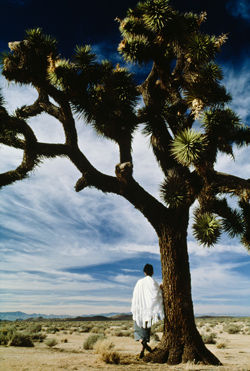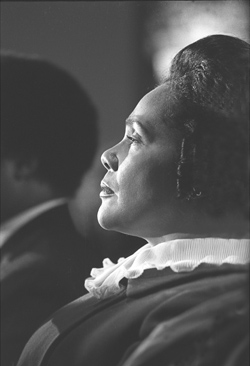Such an excellent post.It has a wonderful photos and useful information and it is written in a good manner in which the reader will easy to understand.
The State Of Stock Photography Today: Is It Still A Viable Route For Earning Income With Your Images?

© Kimberly Beck Rubio
As I conducted research for this column I found that less and less photographers have an interest in the “microstock” business. (For a good discussion of the microstock business type “Stock Shock” into the Search box at www.shutterbug.com—Editor.) Most professional photographers seem to consider this an unreasonable business model. Before practitioners of this trade write in to protest, keep in mind this is an overview of the stock industry as a whole as represented by our interviews with working stock shooters. I am sure an update is in order on microstock today, but that is not my goal here.

© Kimberly Beck Rubio
All in all, “Rights Managed” seems to remain the best business model for individual stock photo sales, while microstock seems to sell best through a stock distributor. (For a discussion on Rights Managed images type “Rights Managed” into the Search box at www.shutterbug.com—Editor.) And no matter what the licensing, effective and proficient keywording is crucial to selling stock—especially if you are marketing and licensing your own work.
Thanks to the photographers contributing to this column (check their websites, supplied at the end of column): Kimberly Beck, John Fowler, Tina Manley, Mark Maziarz, Allen Russell, Ron Sherman, and Mark Turner.

© Kimberly Beck Rubio

© John T. Fowler

© John T. Fowler
Shutterbug: How do you prepare for the technology and creativity needed to market stock photo sales? How important is video as an asset for stock sales?
John Fowler: I try to have the best equipment I can and try to learn whatever I think may help me technically. But I don’t put much effort into post-processing because my photos tend to be documentary in nature, rather than “art.” The most marketable imagery for me is documentary natural history subject matter. I use whatever referral sources I can find and do some e-mail promotion via Constant Contact services. I don’t do video at this time.
Ron Sherman: Most of my time during the past year has been spent editing a collection of 250,000 images from the 1960s to the 1980s, then scanning, processing, keywording, captioning the selects and uploading them to my website. That’s the easy part. Now the marketing begins. When I was licensing my corporate/industrial, Atlanta and Georgia images, there was a large pool of clients licensing my images. That pool of clients and prospects has greatly diminished, not only because of poor economic times, but also because of the subject matter. How creatively I use my e-mails, direct mail, and phone calls will determine my success in expanding my stock photo licensing sales. I don’t see video as an asset for me in marketing my photo archives.

© John T. Fowler

© Tina Manley

© Tina Manley

© Tina Manley
Mark Maziarz: As the stock photography market has evolved (and as I learn my place in it) I find it’s easier to take creative chances with my work. However, people still tend to license the same types of work. I have only been asked for stock video footage a handful of times. I’m keeping an eye on it, but I’m not ready to jump into that part of the market.
Tina Manley: I find that keeping all of my processing software up to date is invaluable in preparing my photos for stock sales. I use Photoshop CS6 and Lightroom 4 to process and catalog all of my photos. Lightroom makes it easy to add keywords as I enter the photos into my catalogs. Effective keywords are what make stock sales possible. If the photos can’t be found, they can’t be sold. Copyright information, model releases, and agencies that I have submitted the photos to are also added in the file information in Lightroom. Reviewing photos that have sold recently on agency websites helps me keep up with current trends in the stock business. One area that I have not entered, in spite of the current trends, is video. I am still a believer in the power of the still image and have no interest in learning video this late in my career!
Kimberly Beck: My experience is specifically with microstock. Technical excellence is key; in microstock there is no room for any technical errors—focus, color correction, digital aberration, digitizing, and dust. This is the source of rejection of individual images, not to mention rejection as a prospective contributor to microstock sites. In addition to the technical aspects, strong composition is important. Point-and-shoots are fine (many of us carry them when we can’t carry the big SLR) but outstanding composition and technical perfection are still required.

© Mark Maziarz

© Mark Maziarz

© Mark Maziarz
Allen Russell: The two are heavily connected. Technology has played a huge role in my business in a number of directions. First, I used the myriad of free and/or low cost learning opportunities online to learn the technology I had to know to move my business forward. With this knowledge I went on to first transform my photography to digital and then develop an online marketing program. I have progressed to the point of almost total self-marketing through my website.
Creativity is a constant that must be fed. It is often considered something that just comes in magic moments and that certainly does happen, but I believe that you must create the opportunity for creativity. The two greatest developers of creativity for me are showing up and striving to keep my eyes open and mind clear to see what I am offered. As for producing video it certainly makes sense, but for me, even after all these years, I am still quite enamored with still images and want to keep my efforts concentrated in creating them.
Mark Turner: My stock photography niche is plants, both gardens and native. I specialize in high-content images with detailed captions, primarily for editorial markets. I try to stay on top of name changes in the plant world (Latin names aren’t as stable as once thought), as well as current trends in gardening. Having a high degree of subject matter knowledge is part of what has made me reasonably successful in this business.
I look at what other garden photographers are doing, particularly those who have a more poetic approach than my sometimes scientific viewpoint. I network with other garden photographers, and garden writers, through the Garden Writers Association. I’ve developed several good clients as a result of being a reasonably active member of the group and attending annual national symposiums.
Despite having spent 1979-1993 as a television producer and director, I’m not currently involved with any video production. I got out of the business prior to the transition to digital and haven’t looked back. Video is a very different medium from still photography.

© Allen Russell

© Allen Russell

© Allen Russell
SB: What types of images or concepts for stock photography are particularly marketable today?
Tina Manley: Model released photos of people are always in demand. I make it a point to get model releases signed whenever possible and to keep the releases filed with the photos. Agencies have lists of concepts that buyers have requested. Any time I can add a concept to the keywords in a photo, I do.
Allen Russell: I believe the type of image and subject matter that is successful is largely based on the individual photographer’s passion and knowledge. The current stock market fairly well demands specialization, especially so if you market your own images. My specialty is “Life in the American West.” I know it well and have lived it in numerous directions most of my life. I use my knowledge, creativity, passion for my subjects, and talent to produce images of my specialty that stand out from the rest. The current technology gives me the tools to show and market the images to the world. Concepts are crucial and expressed in many ways. With my subjects I may show speed and/or grace with running horses, pride with an Indian in traditional dress, or innocence with a puppy or foal.
Mark Turner: I’m a believer in being an expert in a niche. My brain sees the world somewhat literally, so the whole conceptual imaging thing has been challenging for me. Particularly for an editorial photographer, being a subject matter expert has worked for me.
It’s a tip I picked up from one of Rohn Engh’s books in the mid-1990s when I was establishing my business. I don’t try to be all things to all customers. Of course I could shoot happy businesspeople in the latest office and clothing styles, but I don’t choose to. There’s a lot of competition for those images in the marketplace. I’ve deliberately chosen a tighter focus to my work.

© Ron Sherman

© Ron Sherman

© Ron Sherman
Ron Sherman: My collection of images from the 1960s and 1970s gives me both an opportunity and a challenge. As a photojournalist back then, I was able to document those decades from a unique perspective. Some of the subjects were a 1960s middle class family, the anti-war march on Washington DC, college life, and civil rights in the South. Most of the uses for my images over the years were and are editorial in nature. The licenses were for magazine stories, textbooks, and hardcover “city” books. Are these unique images still marketable? That’s a good question and I hope to have a definitive answer in the next year or two. I feel if I have an image that can tell a story for an article or book, it gets a license.
Kimberly Beck: People—contemporary people, good looking, but not models. People are obviously top sellers, and while models sell well, I think there is a need for “real” people—attractive, yes. Technically perfect images, yes, but perfect people, no. I hear the need for images of “real people” from art directors ranging from small companies to large advertising agencies. While very posed, images of models sell well for small ads and websites, they generally don’t work for national advertising campaigns or lifestyle catalogs. Then, it really comes down to trends. What are the commonly searched for microstock images? Backgrounds, weddings, people, clip art, flowers, digital, etc. But what I’ve found is that reaching beyond the “commonly” searched terms into niche markets can be profitable: my best sellers are of unique landscapes, while perhaps represented in traditional stock, not well represented in microstock. I’ve dabbled in backgrounds and frames, but with minimal success.
Mark Maziarz: The secret for me has been to specialize in many different types of images of my very local market of Park City, Utah. It’s a small town of 10,000 people, but it has national and worldwide awareness, creating a reasonable market for images without a large supply. The best-selling images for me are of local architecture, neighborhoods, and settings, followed by scenics, followed by lifestyle. I’m finding that lifestyle images, although they used to be the best selling, now are being supplied by microstock outlets even though they weren’t shot locally, or even in a place that looks like it could be Park City.
SB: What are some of the pros and cons of agency vs. independent stock licensing?
Tina Manley: Having photos with agencies ensures that my photos are available for lease even when I am traveling or out of my office. The agencies do all of the negotiating and collecting of fees. On the other hand, I usually charge more than the agencies do for similar uses and building a relationship with publishers ensures that they will consider my work for future use.
Ron Sherman: I have been with one or more agencies (now distributors), eight at one time, since the 1960s. I was blessed to be associated with Tony Stone for over 10 years and he set a standard of conduct unmatched by anyone then or since. Except for a few remaining images that are left with TSI’s successor, I have been marketing my stock photo archives myself. There are no pros in dealing with today’s distributors. They take 60 to 90 percent of fees, change the terms of their contracts to suit themselves, and could care less if you stayed with them or left.
Licensing stock independently is not easy, but it’s a lot more satisfying when a license is written and a check is cashed. A specialty and a unique point of view are essential to be successful. An independent stock photographer has to be creative in all aspects of running a business, and stock photography is a business. First it is necessary to find prospects for your images and then turn them into clients. Find other photographers who do stock photography through online discussion groups and ask a lot of questions. There are books on stock photography that will give resources that you can expand on. Use e-mails, the phone, and the post office to find prospects and clients. Work hard. Stay focused. Don’t give up. Successful stock photographers love their work.

© Mark Turner/TurnerPhotographics.com
Mark Turner: Agencies, like Getty, have a dominant position in the marketplace and reach a wider potential audience than any individual photographer could ever hope to connect with. In turn, they take a huge percentage of the gross license fee, 60 percent for US sales and 70 percent for non-US sales. They’re also more concerned with the total volume of sales rather than maximizing the dollars from each individual image licensed. I get disgusted with sales reports listing licenses where my share is under a dollar for a Rights Managed photo.
I’m unhappy with the consolidation of agencies that’s happened in the industry, which I think has led in part to the drop in prices. It’s also led to a total absence of any relationship between photographer and editor at the agency. I haven’t uploaded anything new to an agency in several years. They want fully-finished high-res files with detailed keywords before some anonymous editor selects the few they’ll place in their collection. It is way too much work on the front end for the return at the back end.
With client-direct sales from my office I keep 100 percent of the license fee. I’ve developed relationships with editors who send me want lists for every issue and new book title. I prepare web preview galleries, images that are essentially straight from the camera. Sometime later they send a request for high-res files for a select few.
I don’t put the time into finishing images until someone says they want to license them. That’s a huge timesaver. I still provide old-fashioned research services, at no extra charge, to my customers. Some of the want lists I receive run to multiple single-spaced pages.
The downside of client-direct licensing is that it takes considerable time. I spent close to an hour today prepping a preview gallery for a customer that was looking for two species of plants. For a book project I may spend multiple days putting together the previews. With the advent of e-mail, web galleries, and FTP, delivery deadlines have become much tighter. That means I have to spend more time close to my computer to satisfy my customers. When I’m out of town on an extended shoot I may miss some sales opportunities because I’m a one-person operation. At times I’ve talked my wife through optimizing images in Lightroom while standing by the side of a highway on my cell phone so she could deliver a time-sensitive request for me.

© Mark Turner/TurnerPhotographics.com
John Fowler: More cons than pros. I’m not at all happy with “agencies” today. They do a very poor job for photographers. I use only Alamy and TIPS, license only Rights Managed, and permit no third-party licensing. I refuse to permit others to make more money than I from my work and will not consider working with such as Getty and Corbis, in spite of some invitations in the past.
Mark Maziarz: I’ve been with agents for the last 20 years, but I license most of my own work primarily through my various websites and I can keep my rates higher and I can hear feedback from my clients. I have easier access to tear sheets (printed samples) of the images used. I only had one agency ever send tear sheets and even they stopped doing that for me years ago.
Allen Russell: For me there is no other option other than independent licensing. I market only Rights Managed and just don’t fit at all with the current business model of agencies. They are not capable of marketing my specialty images and I am not willing to concede to their photographer/agency demands. Certainly, for some, there are options available to make it with the major agencies but they are not suited for me, my lifestyle, nor my philosophy on being a photographer. I have been represented by a number of leading agencies, am a past agency owner and president of PACA so I have not come to this business decision lightly.
SB: Image sharing and image rights seem confusing in many markets. How do you see the business model for licensing stock photos adapting to the future?
Ron Sherman: I have always followed the Rights Managed model, and always will. All the images on my website have a visible copyright notice and have been registered with the US Copyright Office. I put no image on any social media without a visible copyright notice. In the few instances where my images have been used without a license, I was either paid for the usage when it was in a printed publication, or had it taken down when it was online.
Mark Turner: I still license almost exclusively on a Rights Managed basis. In editorial, my clients definitely understand one-time, non-exclusive rights for a specified print run, or edition of a book or magazine. Licenses have gotten broader over time so they now usually include a web version of the magazine as well as print.
In my niche I don’t anticipate ever having sufficient volume of low-fee licenses to make up the difference from the Rights Managed fees I get directly from my office. How many clients are going to be asking specifically for Chamerion angustifolium and Impatiens capensis?
Every image I place online, and I have some 30,000 on my websites, has a visible watermark in the corner. My sites include a copyright notice. I’m sure people have taken them, or linked to them on Pinterest (I know, because I’ve checked). But with that many out there, there’s no practical way to police unauthorized use. I take the risk because if clients can’t see what I have then they can’t choose to license my work. I much prefer to work with experienced photo editors, who know how the system works and what prices should be. I find it difficult to work with small business owners, as they usually have no clue about how the stock business works. I have to spend time educating them, and it usually isn’t worth the effort in the end.

© Mark Turner/TurnerPhotographics.com
Tina Manley: I am afraid microstock and royalty-free leasing is here to stay but I have never leased through microstock agencies or used royalty-free licensing and have joined several organizations working to protect photographers’ rights. Pro-Imaging, based in England but with members worldwide, is doing an outstanding job of protecting photographers’ rights through their Artists’ Bill of Rights campaigns.
Only by organizing and working together can photographers expect to protect the rights to their photos. Educating the public that everything on the Internet is not free and that photos are protected by copyright is the most important job we will have in the future.
Kimberly Beck: For the photographer, image rights are not that confusing if you educate yourself. ASMP has astounding resources as does the Copyright Clearance Center. The US Copyright Office may be a confusing resource but the tutorials on these two sites are excellent and reduce most of the confusion, enabling photographers—stock and otherwise—to take measures to protect their copyrights as best possible. So while this issue may not be confusing, it is in need of an overhaul, absolutely! Most photographers do not register their work. And, while technically protected under copyright law, if they are infringed upon, it is very difficult to recoup losses if you haven’t registered your images. If you do try to recoup losses or stop unlicensed use of your images, it can be expensive and time-consuming. To make matters worse, the Copyright Office is currently evaluating raising registration fees!
Mark Maziarz: It has to get easier for the clients. I envision embeddable code that identifies the image to the users (both the art buyers and the viewing public) and also tracks usage for easy CPM (cost per thousand impressions) type of licensing arrangements.
Allen Russell: I think the market will settle into a number of varying business models; all led by technology. Even though technology has brought photography such massive change, it is still in beta. In my business I am finding a steady move to clients who want to work with professionals dedicated to creating images that help them build their business. Today there are no standards for pricing or usage rights. Photography is very compatible with technology for production and viewing but is still very lacking in actual marketing. As an independent marketer I currently use this to my advantage by working closely with clients and offering individual terms that take their needs in consideration. Of course the future for the mass marketing of photography will require a much more extensive approach. I don’t know what the exact technology answer will be, but it needs to facilitate the creative interplay between creatives and clients. Additionally, it will require a fair distribution of proceeds between marketers and photographers.
Website Resources
photographers
Kimberly Beck
www.rubiophoto.com
John Fowler
www.johnfowler.ca
http://wolfgrovediary.blogspot.com
Tina Manley
www.tinamanley.com
Mark Maziarz
www.parkcitystock.com
Allen Russell
www.allenrussellphoto.com
Ron Sherman
www.ronsherman.com
http://ronsherman.photoshelter.com/gallery-list
Mark Turner
www.turnerphotographics.com
www.pnwflowers.com
www.inlandnwgardening.com
Sites Mentioned In This Column
ASMP
http://asmp.org
Bill of Rights Campaign
http://artists-bill-of-rights.org
Copyright Clearance Center
www.copyright.com
US Copyright Office
www.copyright.gov
- Log in or register to post comments


Wow! such a great photos. I really like this site. I surely bookmarked it so that i can visit this site very often.thanks for posting.

You have posted nice photos and the content is very interesting.Your way of explaining it is very impressive. http://www.socialyup.com
















































